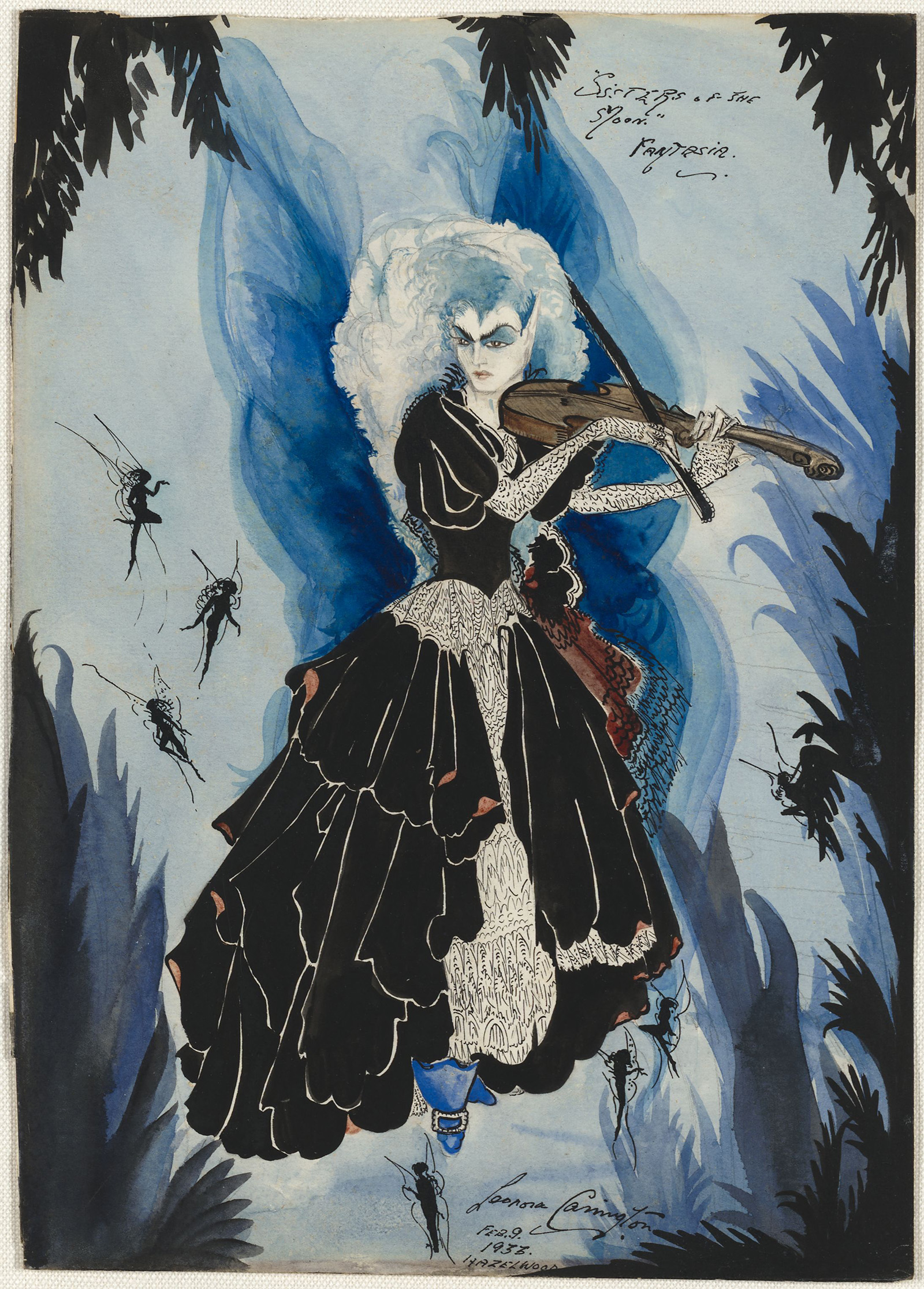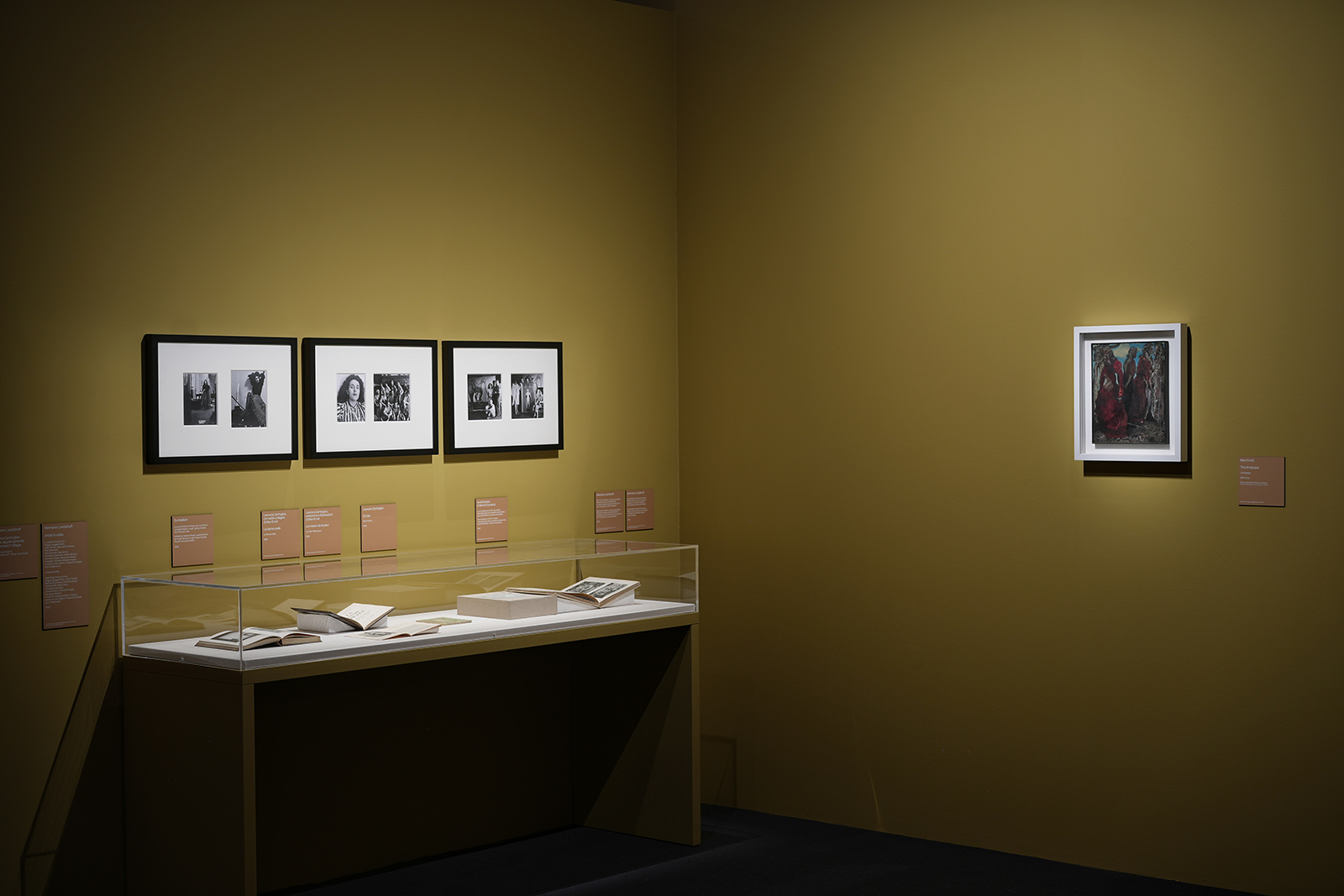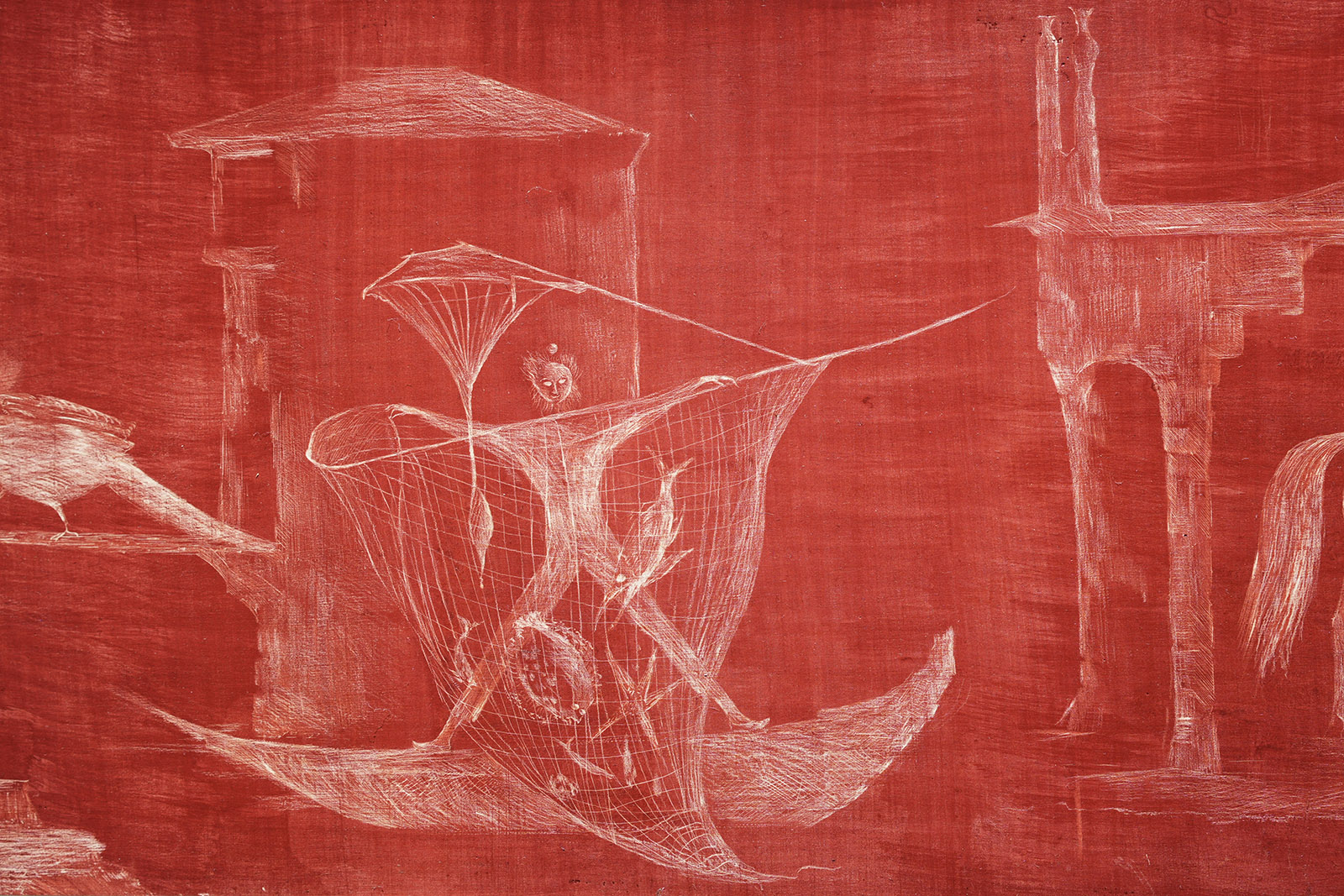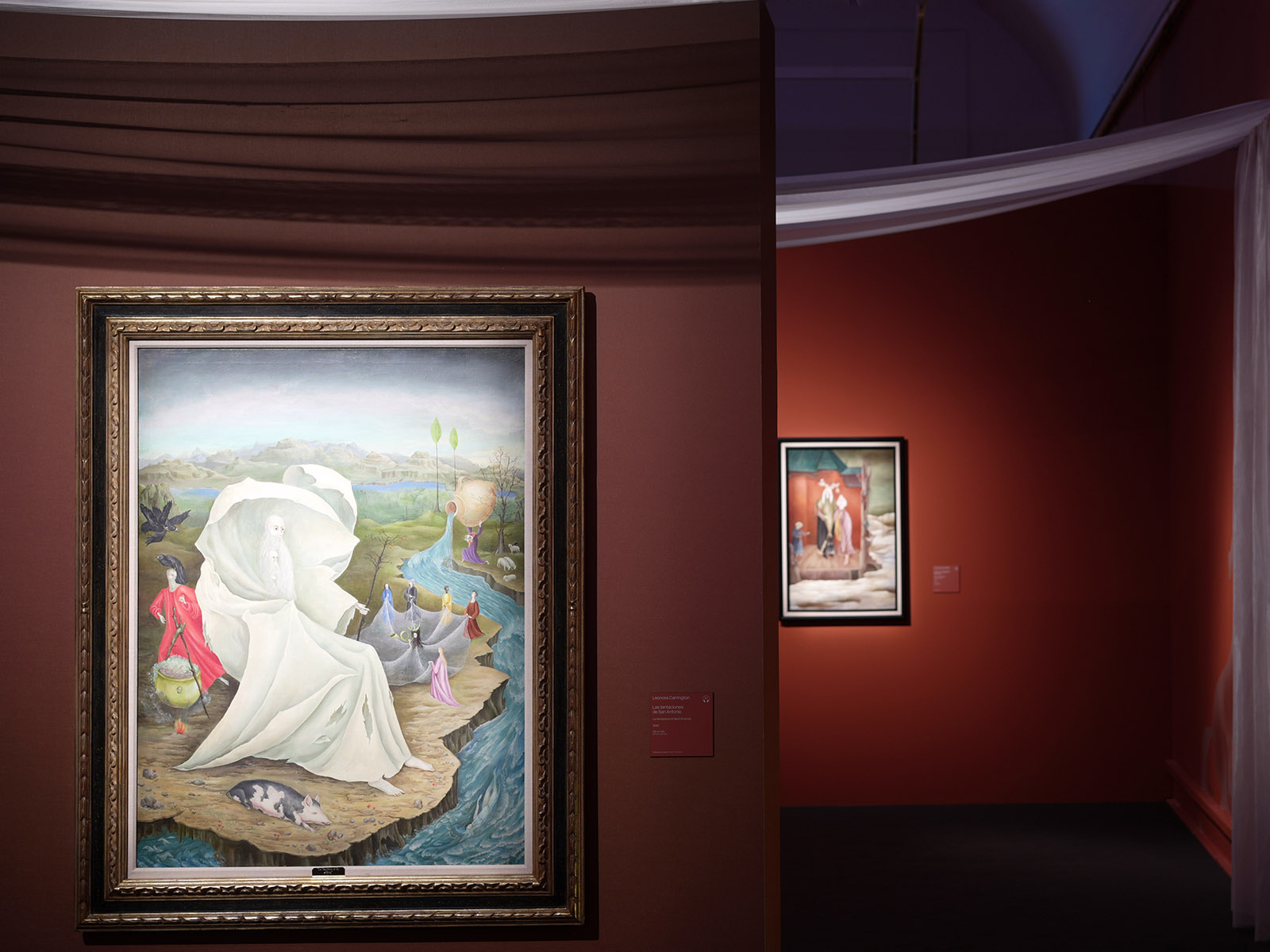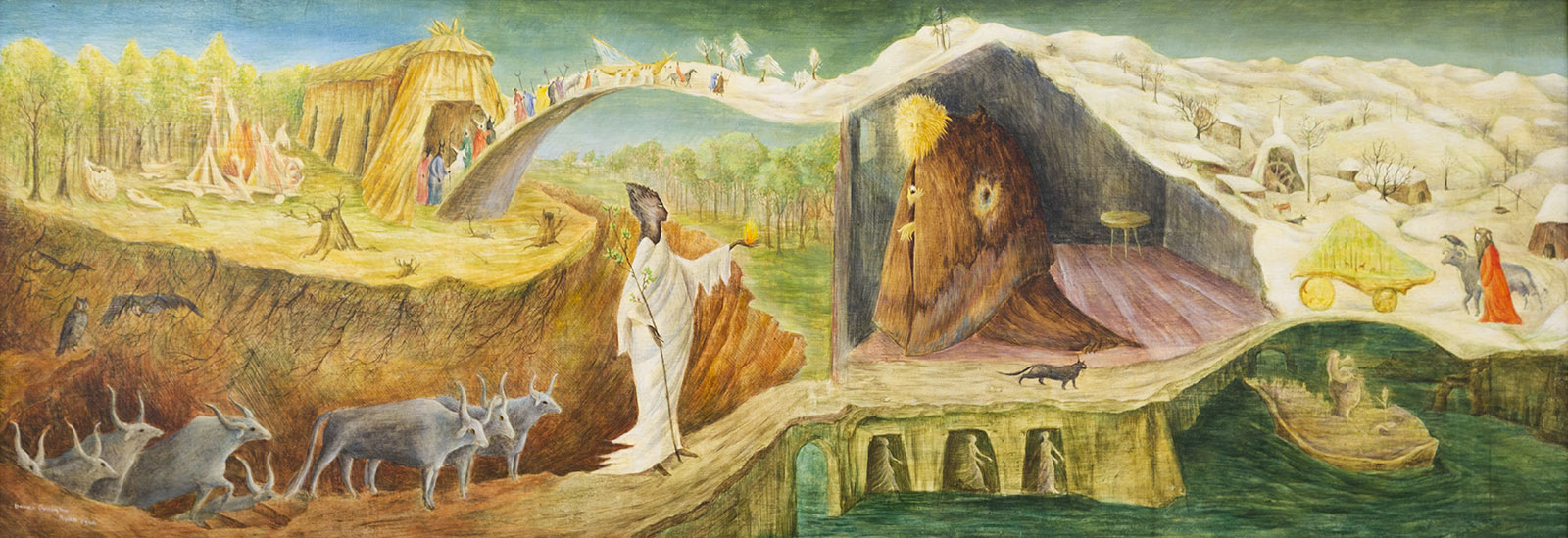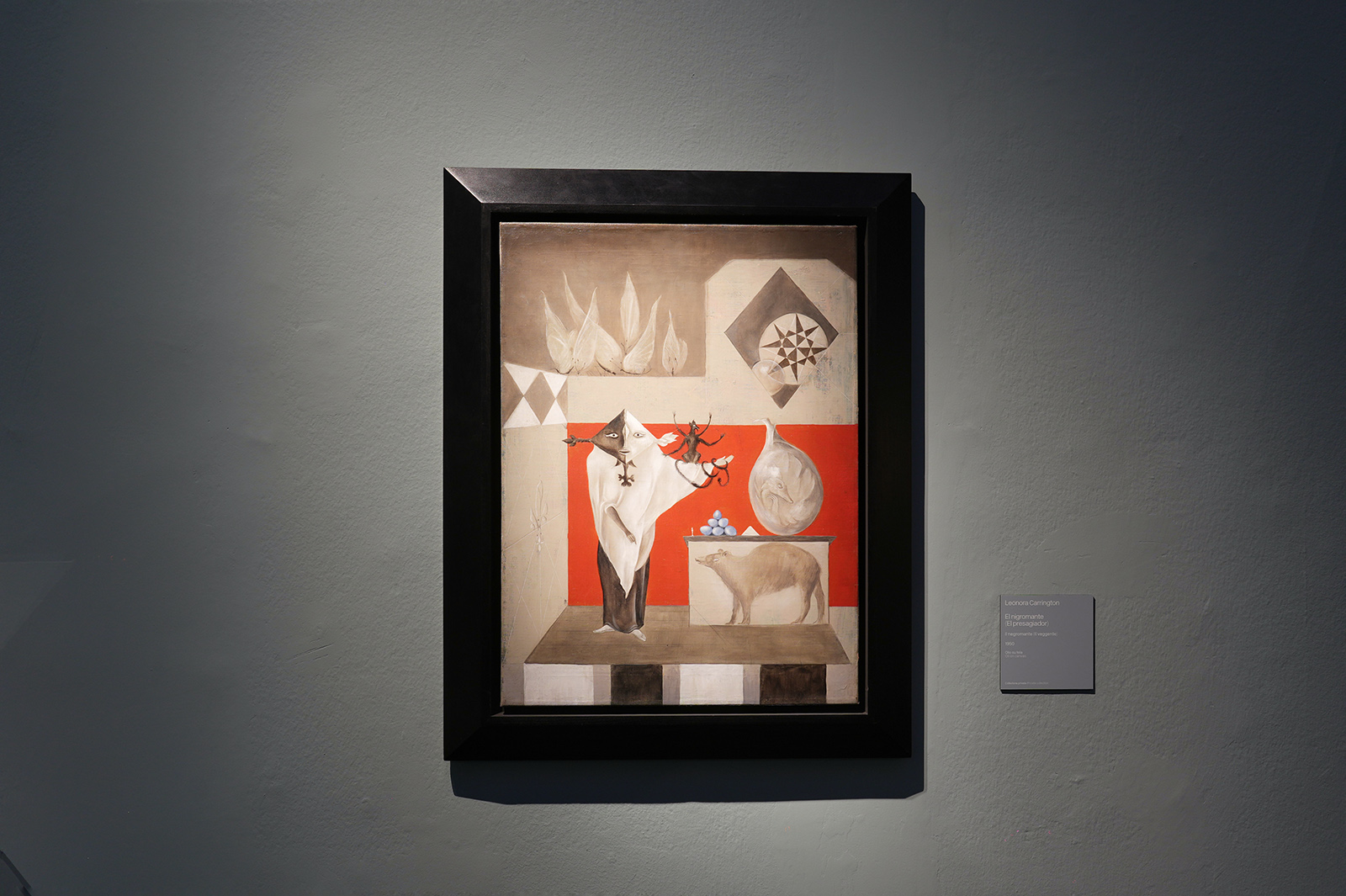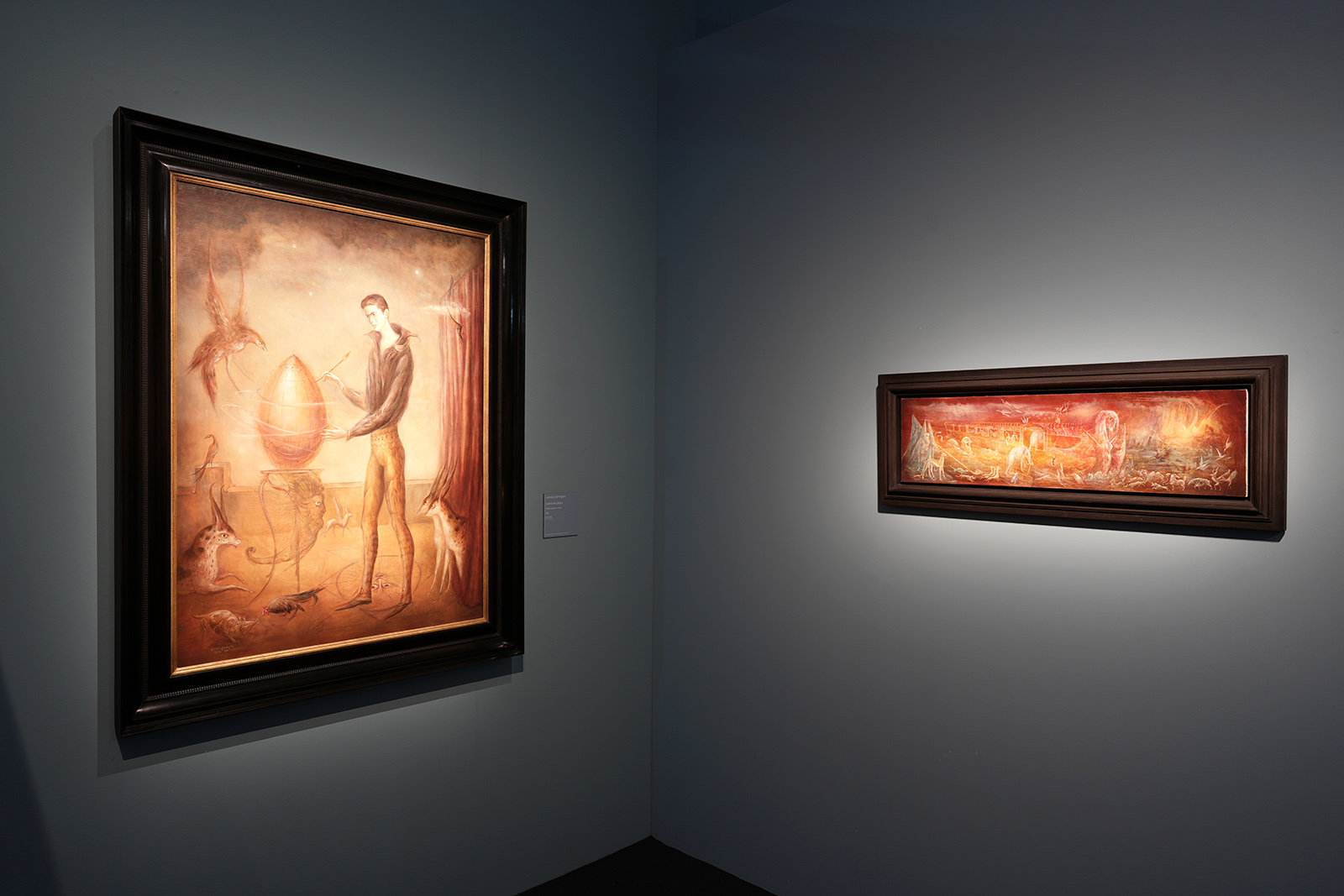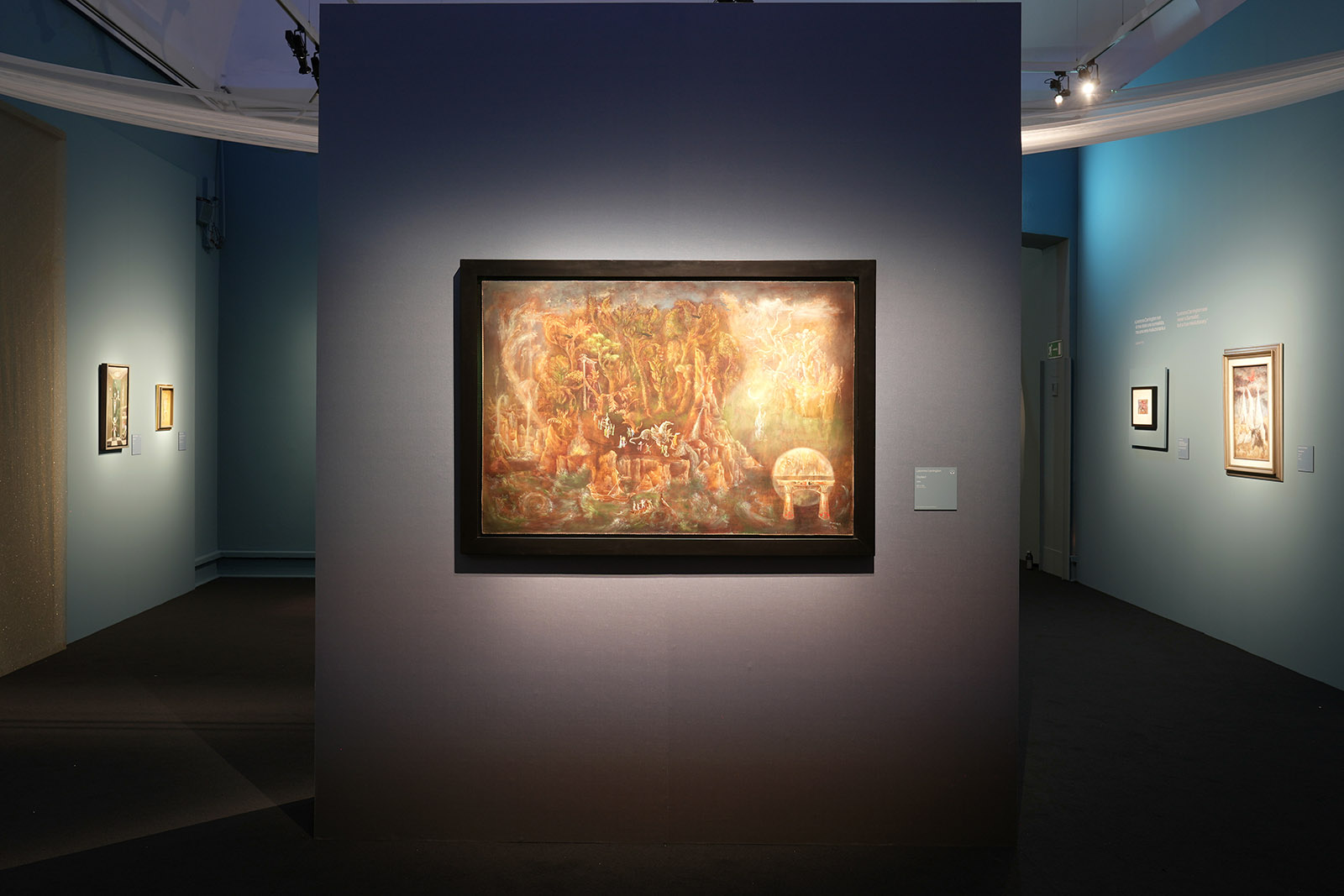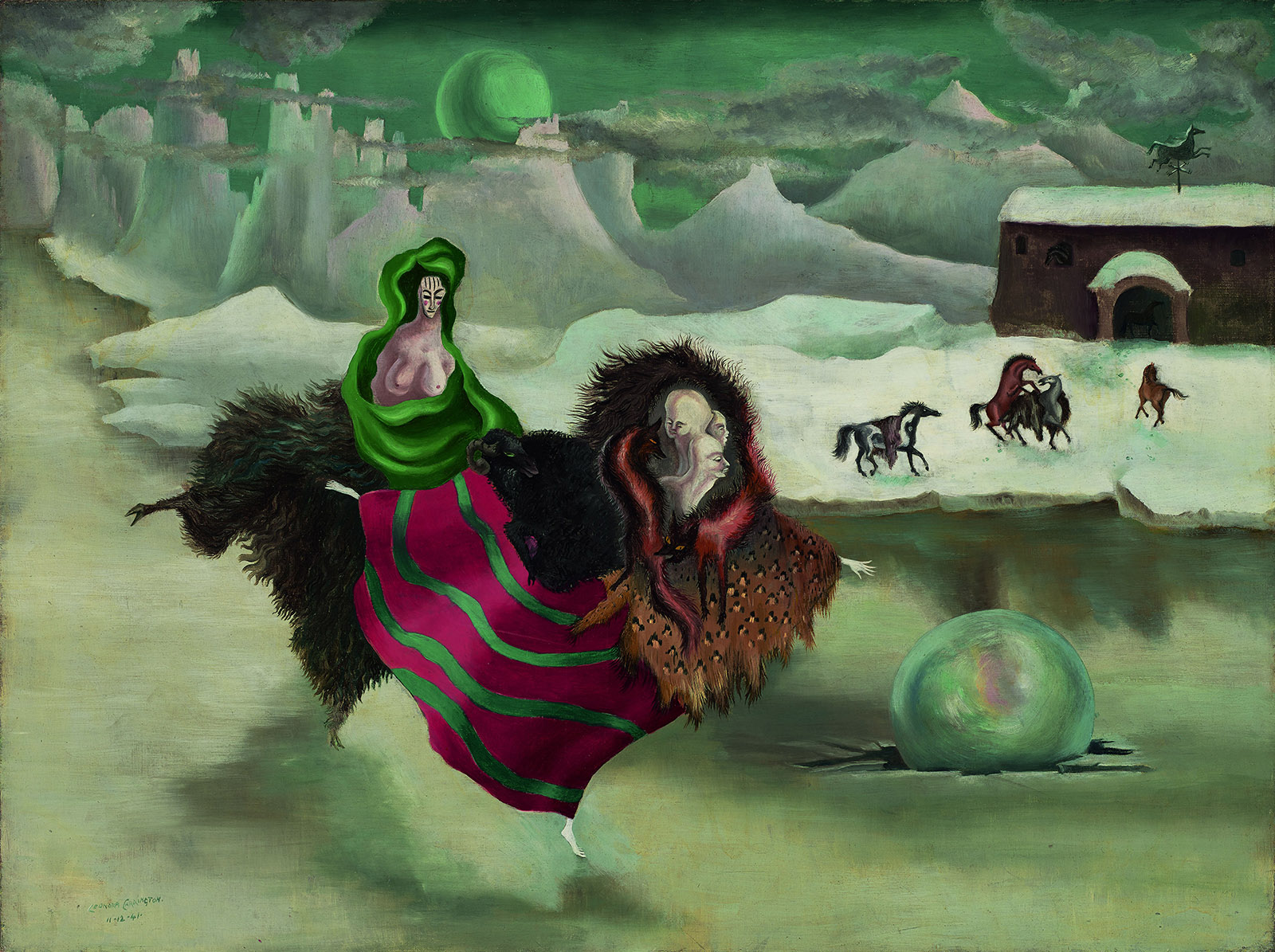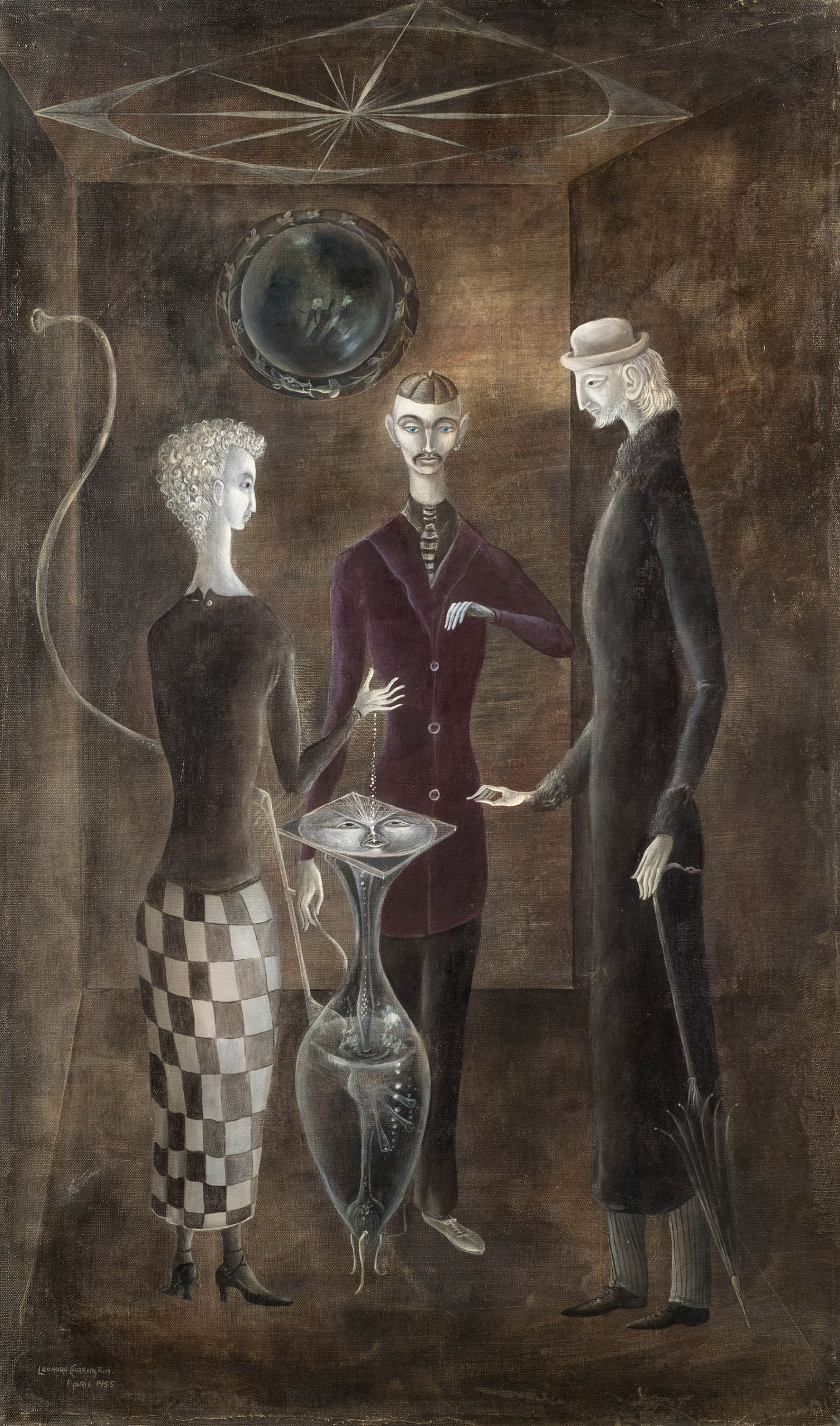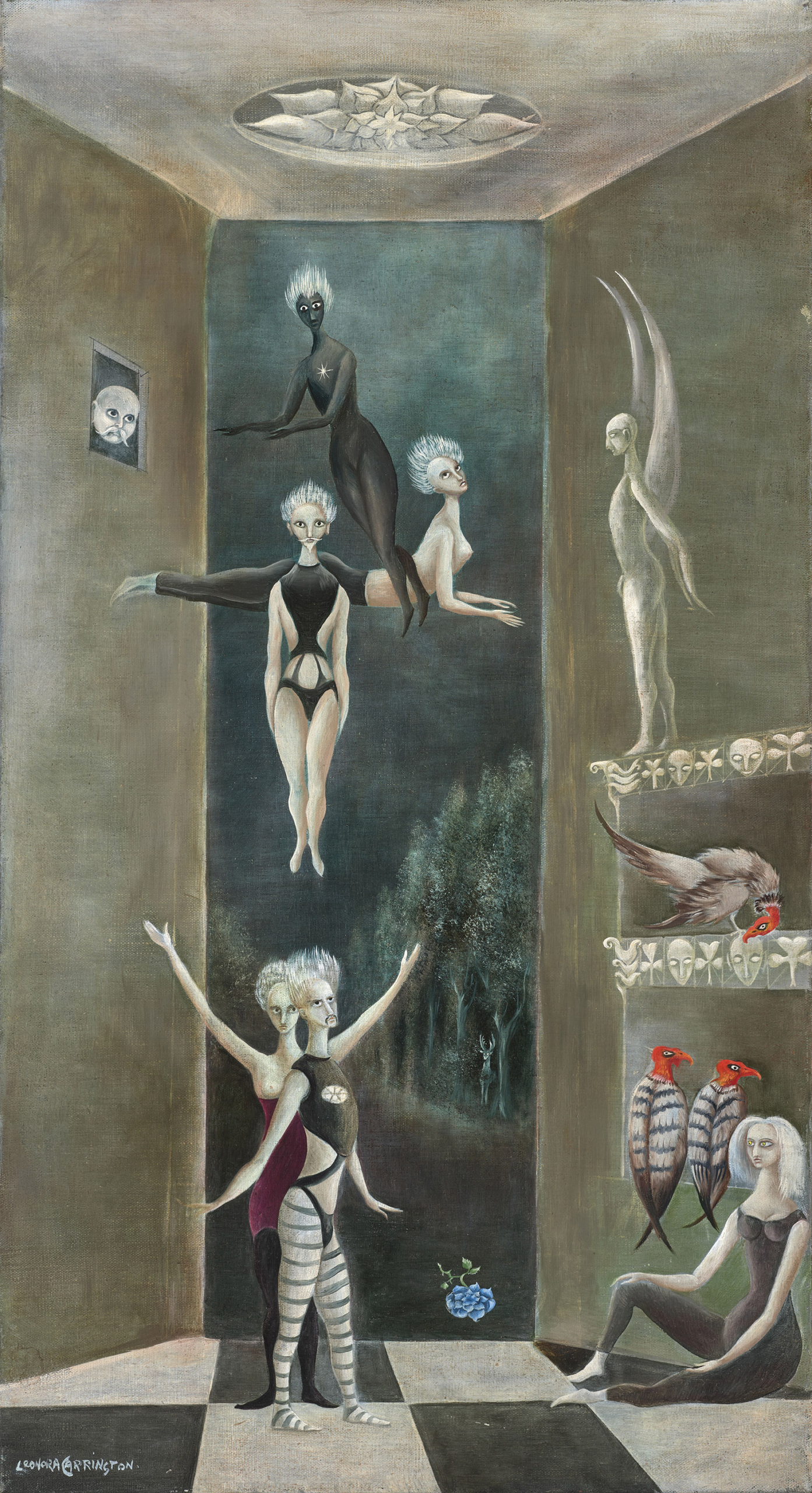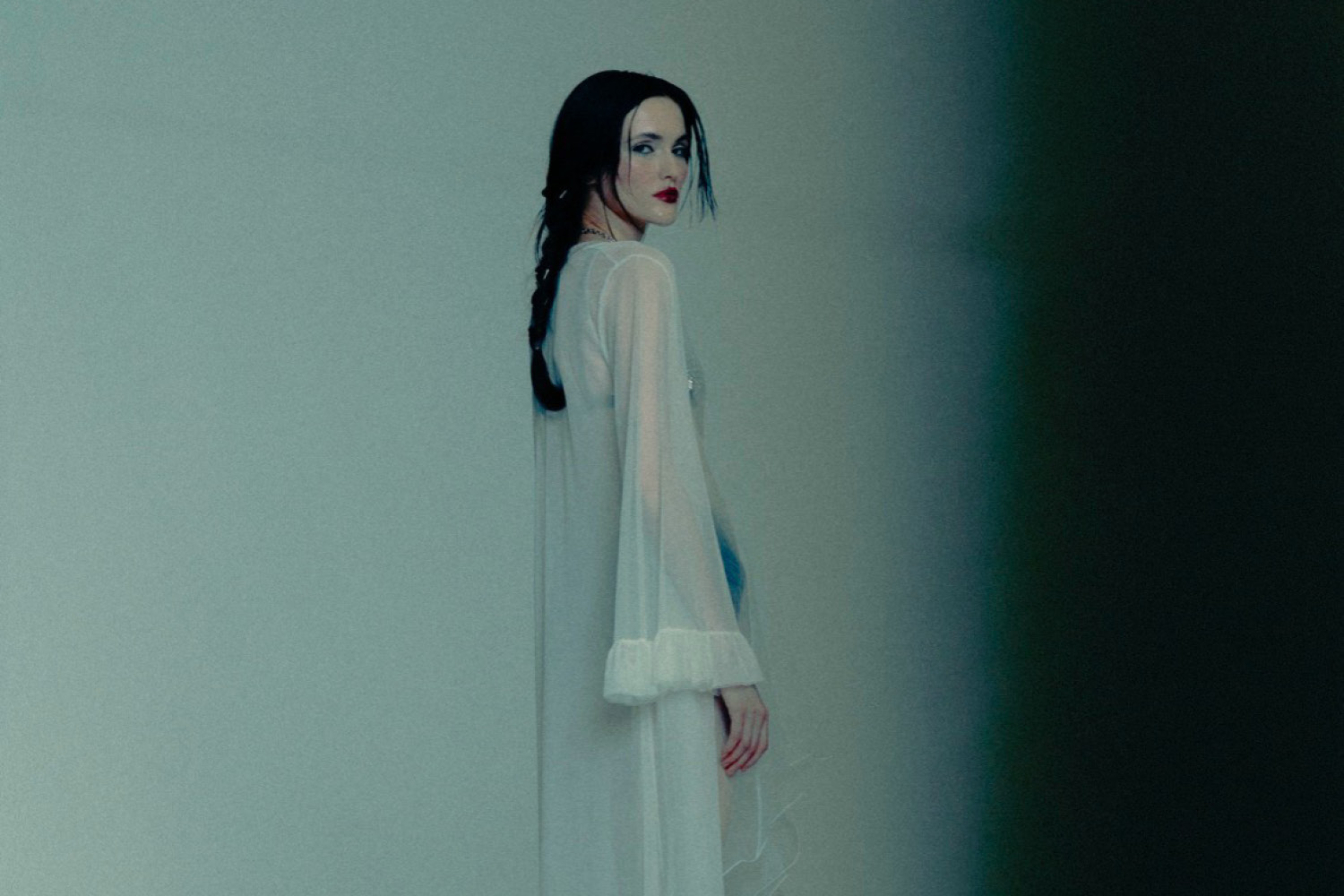A pivotal moment in her oeuvre, presented here, is the watercolor series Sisters of the Moon (a title that echoes the Fleetwood Mac song) where Carrington envisions nymphs, fairies, and witches as embodiments of feminine power and secret knowledge. These works form an alternative cosmogony, a universe of mystical sisterhood. The second section, The Bride of the Wind, borrows its name from a story written by Max Ernst, one of Carrington’s most turbulent loves. With Ernst, she settled in the south of France, in Saint-Martin-d’Ardèche, transforming their home into a total work of art. These were years of great creative fertility, during which Carrington entered the inner circle of Surrealism, later extending her reach to New York’s avant-garde. Among the pieces in this section are early references to horses, a lifelong symbol for Carrington and an avatar of Ernst himself. The exhibition places their works in dialogue, including a rare preparatory sketch for Ernst’s Antichrist, today housed at the Guggenheim in Venice, a painting that allegorises his tormented love for Carrington and his anguish toward Peggy Guggenheim, cast here as the “other woman.”
Between the second and third sections, a documentary video featuring Carrington’s own voice offers an intimate transition to the next chapter, Displacement. This part explores her move to Mexico, where she would spend the rest of her life, raise a family, and shape her mature artistic identity. It was a period of transition and fusion: in her imagery, the Celtic myths of her Irish mother and governess resurfaced alongside the tales of Lewis Carroll, Andersen, the Brothers Grimm, James Stephens, and Jonathan Swift. These early influences merged with the Renaissance and Flemish pictorial tradition, producing a visual language both uncanny and hybrid, saturated with shadowy hues and acid tones.
 https://www.nastymagazine.com/wp-content/uploads/2024/04/DSCF8609.jpg
1066
1600
Editor Nasty
https://www.nastymagazine.com/wp-content/uploads/2015/02/new-logo-basker-WHITE4.png
Editor Nasty2024-04-30 17:20:432024-04-30 20:24:48All Tomorrow’s parties / Venice Biennale
https://www.nastymagazine.com/wp-content/uploads/2024/04/DSCF8609.jpg
1066
1600
Editor Nasty
https://www.nastymagazine.com/wp-content/uploads/2015/02/new-logo-basker-WHITE4.png
Editor Nasty2024-04-30 17:20:432024-04-30 20:24:48All Tomorrow’s parties / Venice Biennale
